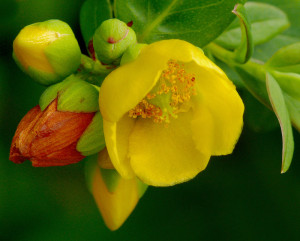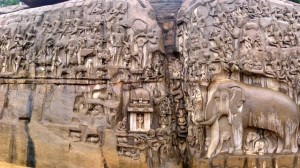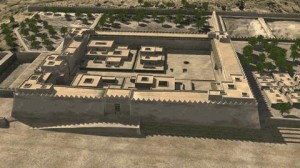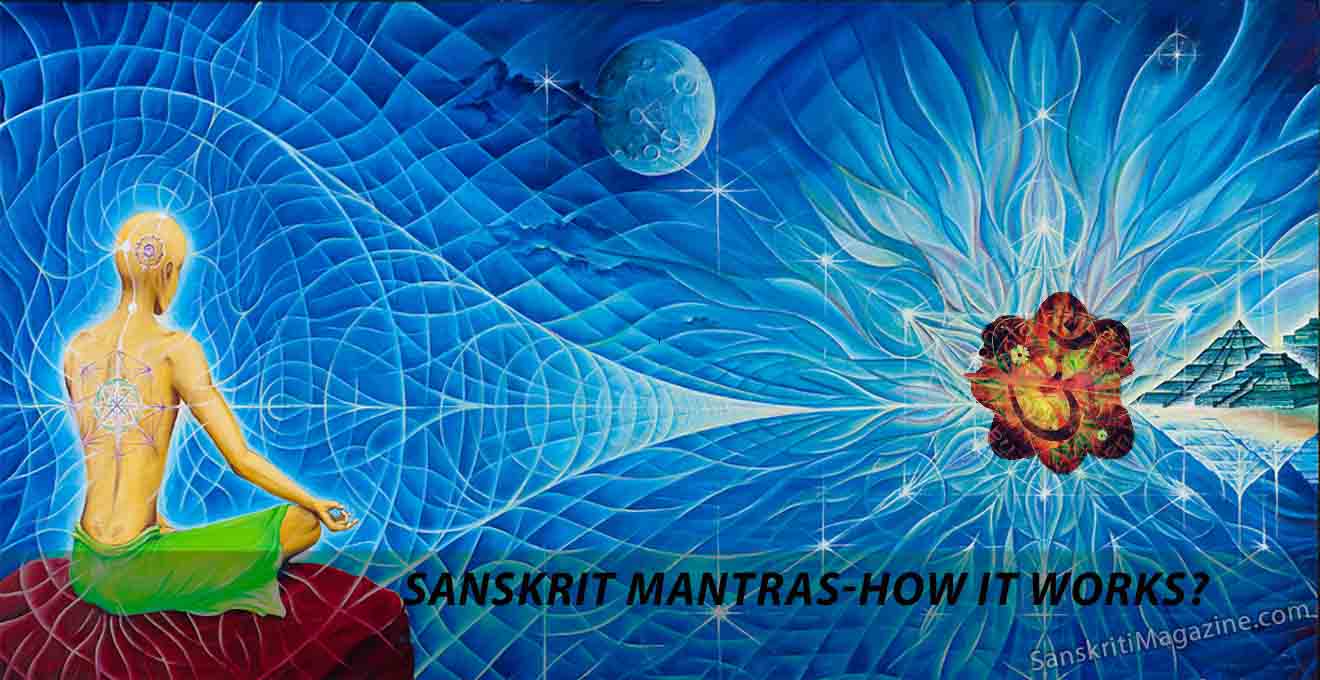At present one can notice two groups of intellectuals. The first group claims that all the present inventions were known to Indians and were recorded in ancient Indian texts or scriptures. But the other group rejects this claim and according to this group, all such information is nothing but myths without any scientific or technical background.
During compilation of information related to Civil Engineering in ancient India, many references with futuristic invention potentials were located. Some references are given below.
Futuristic invention ideas:
These ideas are grouped under three heads.
Related to Botany
 Silver or Gold shining liquid for metals:
Silver or Gold shining liquid for metals:
Trees of Palash (Flame of forest- Butea frondosa) are abundantly present in India. Flowering of the trees occur in summer months around Holi festival. The ancient text Aushadhikalplata mentions that “if juice of flowers, treated with sulfur, when rubbed on copper metal surface, the surface shines as gold. Similarly, decoction of a mixture of flowers, juice and Hartal is used to make silver like lead metal (Ref. Pade, pp.213).
Herbal hair remover:
Shami (Sprung tree – Prosopis spyicigers ) tree seed are enclosed in 30 cm long beans. Ancient texts mention that “if a paste, of dry seed with milk, is applied on skin it acts as hair remover.” (Ref. Pade, pp 389).
Herbal Algaecide:
Water treatment process involves removal of algae from raw water. Ancient texts mention that “if a wooden block of Jamun (Java Plum – Syzygium Cumini) tree is placed in raw water it kills algae within 24 hours”. (Ref. Pade, pp 170). If this information is found correct, inorganic algaecides can be replaced by organic ones that will have no effects on human health.
De-plasticizer:
The main difference between flours of wheat and jawar is their plasticity. Jawar flour cannot be rolled to make chapattis. Ancient texts mention that “if juice of cucumber is added to wheat flour, it loses its plasticity. (Ref. Pade, pp 81). If such de-plasticizers are developed, it would be a boon to agriculturists and civil engineers. Damages due to expansion and contraction of expansive soils (cracking of buildings on Black cotton soils) can be controlled.
Related to Rock mechanics
The rock temples of South India are excellent examples of intricate carving. One can see stone chains or moving stone earrings at such temples. Such intricate carvings appear to be impossible, unless these stones were softened first and re-hardened afterwards. Stone idols to be used for idol making must be intact and free from micro-cracks invisible to eyes.
 Detection of defects in rocks:
Detection of defects in rocks:
The stones to be used for idol preparation were carefully inspected. Microscopic defects, which are invisible to eyes, were detected by applying some herbal paints so that the defects are clearly visible. Dye penetrate inspection (DPI), a modern technique is used to detect micro cracks or other faults in metal casting.
Shilparatna Ch. 14 and Varahsamhita describe an ancient procedure for preparation of four herbal paints, as given below:
- Mix and grind equal parts of Ativish, Hirakas and Geru in milk, apply this paint to stone and allow to dry overnight.
- Mix and grind equal parts of Hirakas and Chor in milk and apply this paint to stone and dry for three days.
- Mix and grind equal parts of Jatamasi, Kusht, Gabha and Ratree in decoction of Trifala, apply this paint to stone and dry for three days.
- Mix and grind equal parts of Jatamasi, Rog and Ashwamari in rainwater mixed with milk.
- Apply one of above mentioned paints to stone and allow it to dry for three days. Such paints were used to detect micro cracks or fissures.
Adamantine Glues:
The subject of preparation of adamantine glue was closely connected with construction of temples. A bonding agent was very essential for fixing idols or in wall construction, when cement and other modern materials were unknown. Even now these glues, known as Astabandha, are prepared in temple premises for fixing or re-fixing images of gods. Four such glues were described in ancient texts. One formula or method is described below. Following shows the ingredients for adamantine glue.
Ingredients:
Sanskrit English/ Latin
1. Tinduka: Fruits of Diospyros paniculata
2. Kapittaka: Feronia elephantum
3. Shalmali: Flowers of silk cotton
4. Sallaki: Seeds of Boswellia serrata
5. Dhanavana: Barks of Orris root
6. Vacha: Barks of Orris root
7. Shrivasaka: A tree resin used as incense
8. Raktabola: Myrrh
9. Guggulu: Commiphora roxburghii
10. Bhallataka: Semecarpus anacardium
11. Kunduruka: Deodar tree resin
12. Atasi: Linum usikatissimum
13. Bilvaphal: Fruits of Aegle marmelos
Ingredients (1-6) are boiled 256 parts of water until the decoction reduces to an eighth of its original volume (i.e. 32 Parts). The sediments were mixed with other substances (7-13). The resulting paste is termed as adamantine glue. This glue is heated and then used in construction of temples, mansions, walls and wells as well as fixing Siva’s emblems and idols of gods. This mortar was expected to last for a million years.
Related to soil stabilization
The stabilized soils were mainly used for adobe construction (mud walls, bricks, pottery, plastering, and flooring). Such soils were also used for outer coats of idols and other objects. Many references from Vedic period (5000 BC) to 15th century AD, about soil stabilization methods are available.
Natural soil plasticizers:
Nowadays concrete plasticizers are used to increase workability of a concrete. Natural soil plasticizers were similarly used in ancient India to improve the quality of soil to be used for different purposes. The functions of these natural soil plasticizers were to:
- Increase the plasticity with the same water content
- Increase the water repellent property
- Increase the strength by increasing the density
- Impart glazing to pottery products
The various types of ancient plasticizers can be grouped as:
Herbal extracts:
Decoction of certain herbs such as Trifala were used. Trifala is a mixture of equal quantity of dry powdered Aamla (Emblica officinalis), Hirda (Teminalia chebula) and Behada (Teminalia Billerica). The decoction (or kwath) is prepared by boiling the solution of Trifala in water, till the volume of liquid is reduced to one-fourth of its original volume. The solution is cooled before application. (Ref. Shilpa Ratna)
Fruit extracts:
The pulp of certain Indian fruits, such as Wood apple (Kapittha-Limonia acidissima), Holy tree (Bilwa-Aegle marmelos) Tendu (Tinduk-Dioscoreo peniculata) etc. is highly sticky. The pulp of such fruits is added to soil and allowed for maturation for a minimum period of 30 days and the mixture has to be thoroughly kneaded frequently (once a day). (Ref. Aparajitpruccha)
Barks of trees:
Dry barks of certain milky trees, such Shrivruksha (Turpentine tree) or Palash (Flame of forest tree – Butea frondosa) etc. are boiled in water to prepare a decoction. (Ref. Vastu Vidya Savyakhya, Ref.13)
Natural fibers:
Natural fibers were added to soil. The fibers were obtained from flowers and fruits of Shalmali (silk cotton tree), coir, jute, flax etc. (Ref. Sakaladhikar)
Natural polymers:
Various natural polymers used to be added to ancient construction materials (mud, lime, mortars, paints, etc.) These polymers were green algae, moss, coconut water, cow-dung, pastes of black gram, Jaggery solution, etc. (Ref. Tantrasamuchhyaya)
Brick making
 Yajur Veda, Chapter 13 mentions the name of Sage Medhatithi as a designer of bricks (Eshtika) which were used to construct Yajna Kund (sacrificial fire tank). Yajurvedsamhita mentions about method of preparation bricks and a special type of pot (Ukha). The soil was stabilized by adding hairs of goat, fine sand, iron slag and stone dust. This soil is used for making square bricks. More details are available in Ref. 16 (Kulkarni, R.P.)
Yajur Veda, Chapter 13 mentions the name of Sage Medhatithi as a designer of bricks (Eshtika) which were used to construct Yajna Kund (sacrificial fire tank). Yajurvedsamhita mentions about method of preparation bricks and a special type of pot (Ukha). The soil was stabilized by adding hairs of goat, fine sand, iron slag and stone dust. This soil is used for making square bricks. More details are available in Ref. 16 (Kulkarni, R.P.)
Adobe floors Floors made from poured and toweled mud, are softer and warmer to the touch than tiles or cement, and carry the rich colors of natural earth. Various additives have been tested to make adobe floors easy to create and maintain. One additive is made from psyllium hulls, or commonly known as Isabgol. This additive makes the mud easy to work and acts as a binder when the floor dries. It reduces cracking and increases strength.
Case Studies
Two case studies are presented to explain ancient stabilization methods.
A. Gadhi soils:
These are special types of artificially stabilized soil. Such soils were mainly used for construction of Gadhis or Havelis of rich persons. Such Gadhis still exist in many parts of Maharashtra (India). The soils from such abandoned building are now commonly used by poor persons for mud plastering. Such soils possess some thixotropic properties and impart great strength on drying. The constituents and procedures of preparations were secrets till recent times. The main constituents of Gadhi soil are local soil, fine sand, cow dung, lime, extracts of Belphal (Holy tree fruit – Aegle marmelos), fibers of jute and water for mixing.
The mixture is allowed to mature for a minimum period of 30 days and is kneaded every day. If a clay ball of prepared soil does not does disintegrate when immersed in water, then the procedure is considered successful. A recent earthquake at Latur showed that houses constructed with Gadhi soils were more earthquake resistant.
B. Mud flooring:
The Padmanabhapurum palace in Kerala was constructed around 1601 A.D by Kulasekhara Perumal. It has unique flooring. The black lustrous floors of the palace are still so shiny that one can see one’s reflection in them. But it is not the glitter of mosaic, granite or marble. The floors were made of a material that is unique blend of burnt coconut shells, lime, palm toddy, the whites of eggs and crushed extracts of certain barks of trees and nuts. Modern engineers and artisans are still unable to replicate the flooring.
CONCLUSIONS
From the review of ancient Indian literature presented herein, it can be concluded that:
1. All information available in Ancient Indian texts and scriptures contain many hidden futuristic ideas. Such ideas should be verified with modern research methodology and experimentations.
2. Many of the ancient Indian techniques may not be relevant as modern methods and materials are more cost effective. But one must appreciate the ancient Indian knowledge which was centuries ahead of that available in rest of the world.
3. Kautilya (350 B.C. – 283 B.C.) has advised that “One should review the past with modern perspective – Naven Anaamn Shodhayet”. Hence there is a need to preserve this treasure of ancient Indian traditions.
~ A. S. Nene, retired Professor of Civil Engineering, Nagpur











